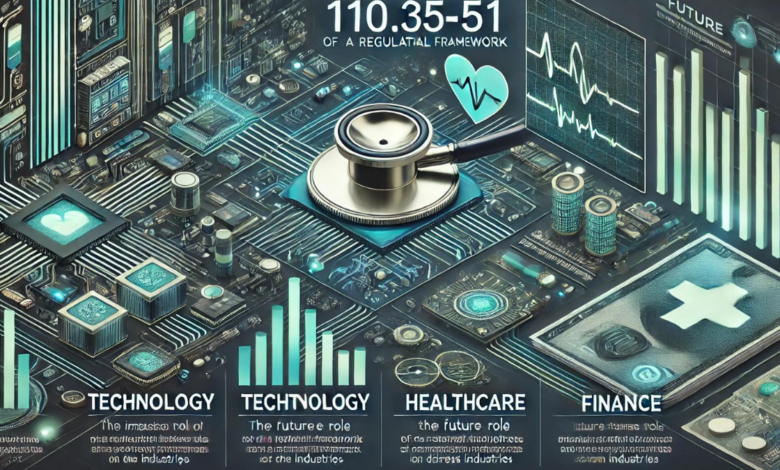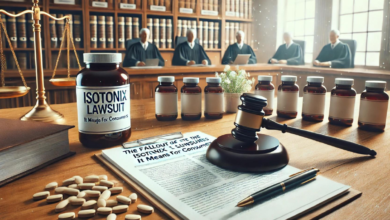Future Trends and Predictions: The Role of 110.35-51 in Tomorrow’s World

Introduction
As we venture further into the 21st century, the pace of 110.35-51 and regulatory change continues to accelerate. Understanding the implications of these changes is crucial for businesses and professionals across industries. This comprehensive analysis focuses on the role of 110.35-51, a pivotal element influencing future trends in its respective fields. This article will explore its potential impacts, future applications, and how it integrates with emerging technologies.
Understanding 110.35-51
Before delving into predictions and future trends, it’s essential to establish a clear understanding of 110.35-51. Although specifics can vary depending on the context (e.g., legislative, technological, or procedural), 110.35-51 typically refers to standards, regulations, or benchmarks guiding industry practices or compliance. For clarity and relevance, this article will treat 110.35-51 as a regulatory framework impacting a broad range of sectors.
The Impact of 110.35-51 on Various Industries
- Technology Sector: In the realm of technology, 110.35-51 is poised to drive innovation while ensuring safety and ethical standards. As artificial intelligence and machine learning evolve, regulatory frameworks like 110.35-51 will become increasingly significant in responsibly guiding the development and deployment of these technologies.
- Healthcare: Integrating 110.35-51 within healthcare could revolutionize patient care through improved data protection standards and enhanced privacy measures. This could lead to broader telemedicine and personalized medicine adoption, contingent on maintaining patient trust through compliance with 110.35-51.
- Finance: In financial services, 110.35-51 could mean stringent data security measures and better consumer protection. As fintech grows, adhering to such regulations will prevent fraud and ensure transparency.
Future Applications of 110.35-51
The potential applications of 110.35-51 are vast. Shortly, we may see its influence in:
- Sustainable Development: 110.35-51 could be crucial in promoting sustainability practices across industries, compelling companies to adopt more eco-friendly processes and solutions.
- Cybersecurity: As cyber threats evolve, 110.35-51 may adapt to impose more robust cybersecurity measures, protecting corporate and personal data.
Integrating 110.35-51 with Emerging Technologies
The integration of 110.35-51 with new technologies is not just inevitable but also essential for progress. For instance:
- Blockchain: By incorporating 110.35-51 standards, blockchain technology could achieve higher levels of security and compliance, making it more palatable for governmental and healthcare applications.
- Internet of Things (IoT): IoT devices, often criticized for their security flaws, could see significant improvements under new regulations, enhancing consumer trust and device efficacy.
Challenges and Considerations
While the benefits of 110.35-51 are clear, there are several challenges to consider:
- Implementation Costs: Adhering to 110.35-51 can be costly, particularly for small businesses. The financial burden of compliance could stifle innovation if not managed carefully.
- Technological Limitations: Rapid technological advancements may outpace the updates to 110.35-51, leading to gaps in regulation and potential vulnerabilities.
Conclusion
As we look toward the future, 110.35-51’s undeniable role in shaping industries and protecting stakeholders is indisputable. Its integration with technology, commitment to sustainability, and emphasis on security will help forge a path supporting innovation and ethical responsibility. Organizations that proactively adapt to 110.35-51 will likely find themselves ahead of the curve, ready to face the challenges of tomorrow’s world.
FAQs about 110.35-51
1. What is 110.35-51?
110.35-51 refers to a regulatory framework that sets standards and guidelines across various industries, ensuring compliance and promoting best practices.
2. How does 110.35-51 impact the technology industry?
It primarily affects the technology industry by enforcing standards that ensure the responsible development and deployment of emerging technologies, focusing on ethical considerations and user safety.
3. Can 110.35-51 influence sustainable development?
Yes, 110.35-51 can drive sustainability by mandating environmentally friendly practices and technologies, pushing industries towards greener alternatives.
4. What are the significant challenges associated with implementing 110.35-51?
The main challenges include high compliance costs, which can be prohibitive for smaller entities, and the pace of technological advancements that may outstrip the framework’s updates.
5. How is 110.35-51 expected to evolve in the future?
It is expected to grow to cover more aspects of digital transformation, cybersecurity, and personal data protection, adapting to the needs posed by new technological innovations and global market dynamics.
You May Also Read: https://trendbrizz.com/unmissable-essentials-every-new-parent-needs/




